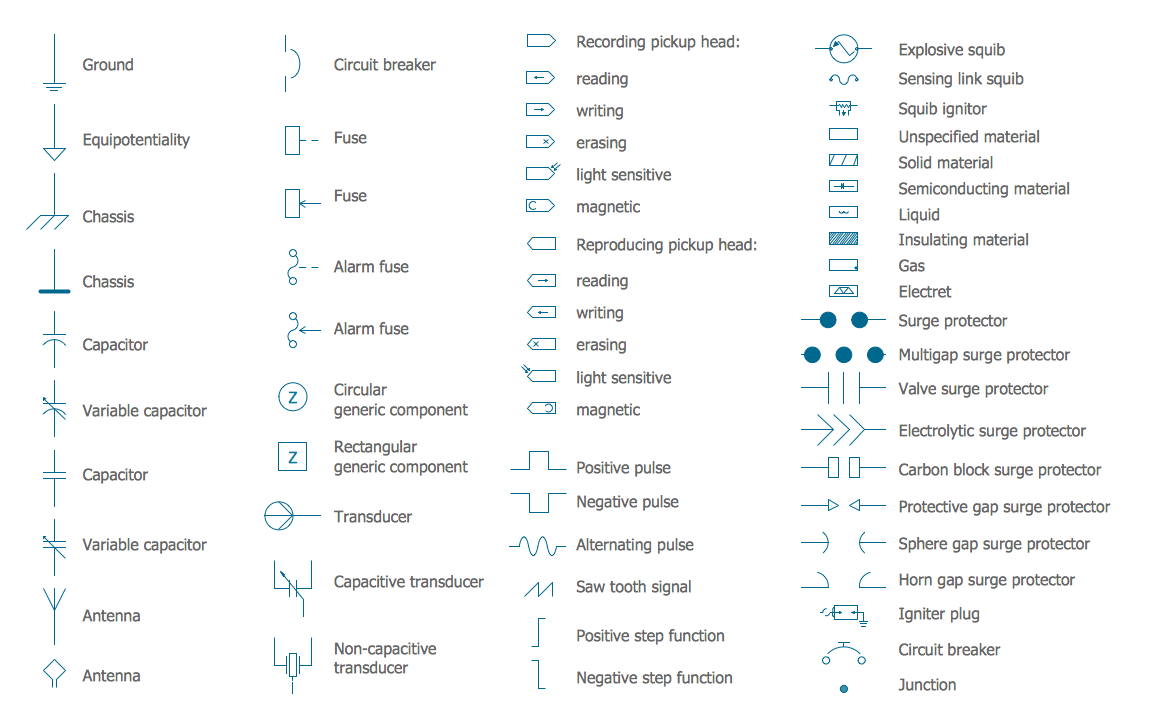
The symbology for the identification of the measurement and control instrumentation on the flow and process diagrams and on the P&ID (Piping & Instrument Diagram), commonly called P&I (Piping & Instrumentation), is generally compliant with the Standard ISA (Instrumentation Society of Automation) identified as S.5, that is composed of identification codes and graphic symbols.
Electronic symbols and abbreviations pdf iso#
The ISA S5.1, ISO 10628, and BS 5070 cover the standardization of P&ID symbols and guide process engineers in their plant design activities. P&ID symbols exist for all major components and lines, such as valves, vessels, instruments, pumps, compressors, and towers. a very detailed diagram showing the processes happening within a plant, the involved equipment, and their interconnections.Ī set of standardized P&ID symbols is used by process engineers to draft such diagrams. P&ID is the acronym for “Piping and instrumentation diagram”, i.e.
Electronic symbols and abbreviations pdf pdf#
Guidelines are updated regularly as new nomenclatures are needed and as the International Committee on Standardized Genetic Nomenclature for Mice modifies the nomenclature policies.A complete collection of the most used P&ID symbols for lines, piping, valves, instruments, pumps, compressors, pressure equipment and other mechanical equipment, and the PDF file for P&ID symbols to download WHAT IS P&ID? This chapter presents a basic form of the mouse nomenclature guidelines, covering the nomenclature forms that are most commonly used and encountered. Strain names that contain gene symbols change concordantly with gene symbol changes and also may change as the result of substrain formation from an original colony. the establishment of a gene as a member of a gene family with previously established gene family nomenclature, and the identification of orthologs among mouse, rat, and human where a common symbol is adopted for all three species. Among these are the discovery of the underlying gene previously identified and known only by its mutant phenotype. Although it is a goal for nomenclatures to be stable, there are a number of circumstances that cause changes to official strain and/or genetic designations. This chapter presents nomenclatures used for strains and genetic and genomic objects in mouse that researchers work with daily. 6 Monitoring and analysis of instrument housekeeping measurements. 4 General Discussion and Analysis of Mission and Instrument Operations. 3 Coordinate Systems and In-Flight Geometry. 3 Instrument Design and Operational Capabilities. Data Processing, Validation, and Distribution of Science Data Products. It is therefore intended that this set of Recommendations should replace the earlier publications on the subject. A further set of terms relating to vacuum technology, provided through the generosity of the American Vacuum Society, has been appended.

Because the subject continues to expand rapidly, a further compilation of defined terms has become necessary, and the opportunity has been taken to incorporate previous relevant recommendations concerning nomenclature and symbolism in order to produce a single comprehensive document. In 1978 the Commission on Molecular Structure and Spectroscopy updated and extended these recommendations and, in addition, made further recommendations concerning the use of symbols, acronyms, abbreviations and newly invented jargon. In 1974, the Commission on Analytical Nomenclature of IUPAC issued recommendations for nomenclature of mass spectroscopy which are in the form of definitions of some. The recommendations contained in this document refer to nomenclature relating to theoretical, technological and experimental aspects of mass spectroscopy, and to the symbolism used when presenting and discussing mass spectral data.


 0 kommentar(er)
0 kommentar(er)
